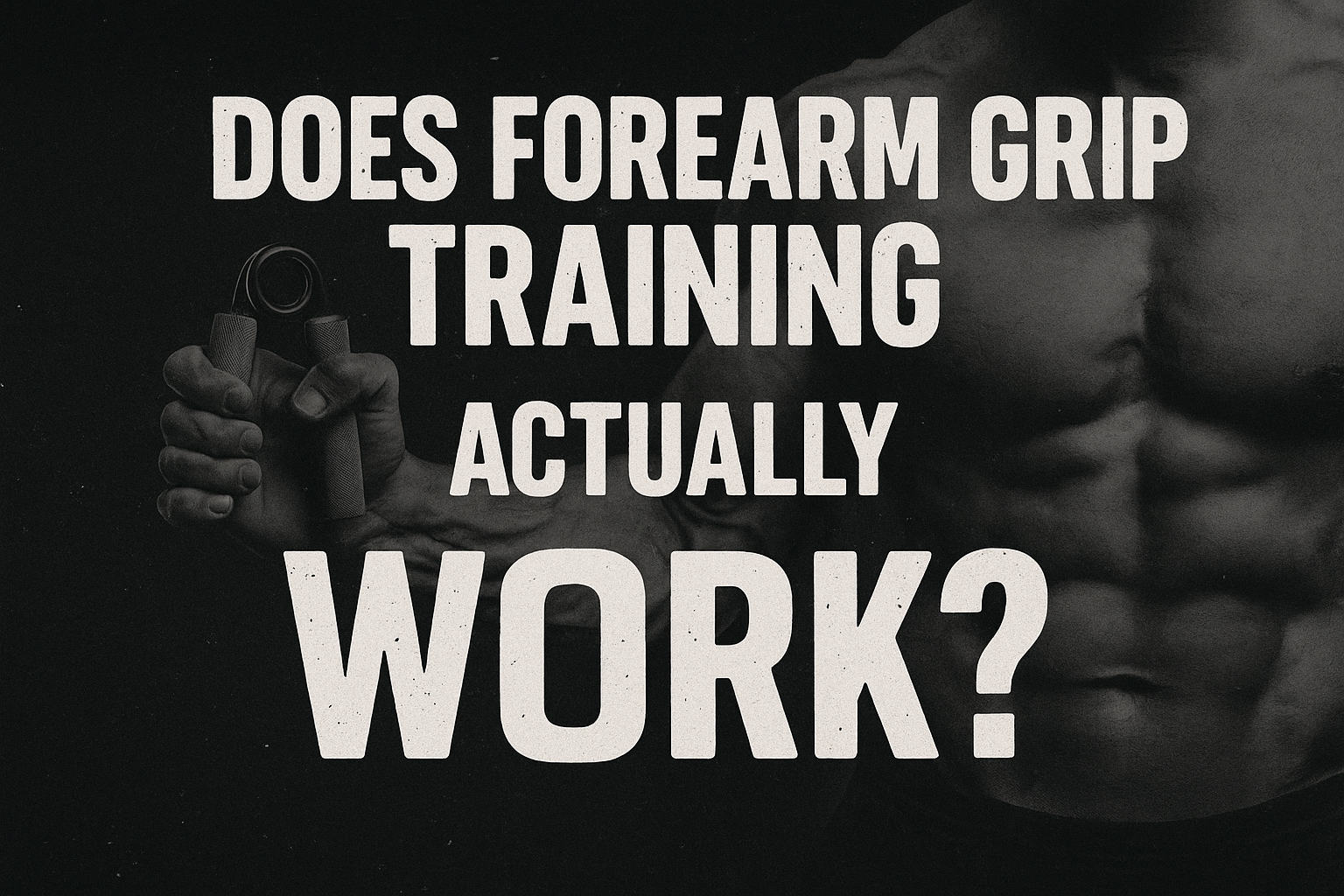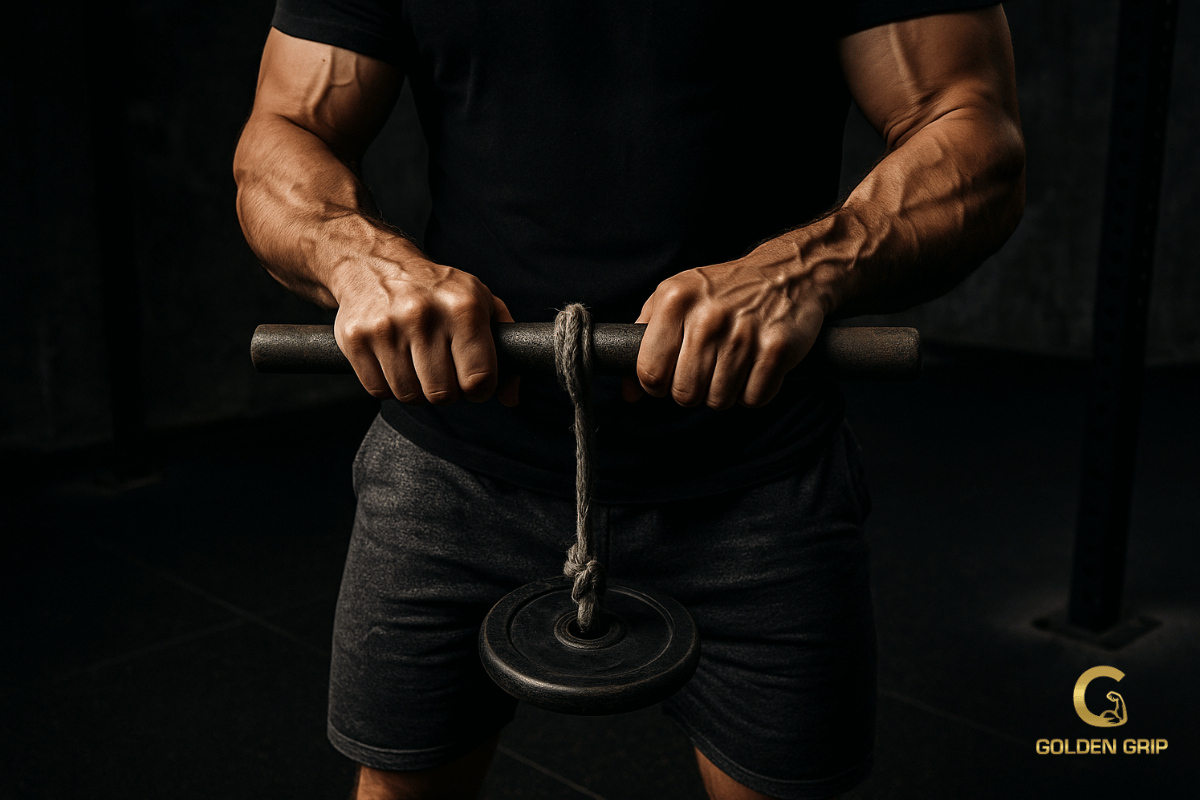Forearm Training: Build Bigger, Stronger Wrists with the Ultimate Wrist Roller Guide
Forearms—often overlooked in the gym—are a cornerstone of functional strength. They define your grip, enhance performance in sports, and are an undeniable sign of power. A solid grip can unlock your full potential, whether you’re lifting, climbing, or even just shaking hands. If you’re looking to seriously level up your forearm game, wrist roller training is a must. Let’s dive into a comprehensive guide that will cover everything from the basics to advanced techniques.
Get ready for a workout that targets the forearm flexors, extensors, and stabilizers, pushing your limits and unlocking real growth. We’ve got training schedules tailored for all levels, plus expert tips to keep you grinding toward bigger, stronger wrists.
Table of Contents
- Beginner Forearm Training
- Intermediate Forearm Training
- Advanced Forearm Training
- How to Execute the Wrist Roller Roll-Up
- Why Wrist Roller Training Works
- Common Mistakes to Avoid
- Progression and Tracking Results
- Grip Strength Training FAQ
Beginner Forearm Training (2x/week)
If you’re just starting to target your forearms, you’ll need to build a foundation. These exercises will activate the key muscles and start laying the groundwork for bigger lifts.
| Exercise | Sets | Repetitions | Rest Time | Muscles Targeted |
|---|---|---|---|---|
| Wrist Roller Roll-Up | 2 | 3 times up/down | 60 seconds | Forearm Flexors, Brachioradialis |
| Dumbbell Wrist Curls | 2 | 15 | 30 seconds | Wrist Flexors |
| Rice Bucket Opens | 1 | 30 seconds | 30 seconds | Finger Flexors |
Intermediate Forearm Training (3x/week)
As your forearms grow stronger, it’s time to introduce more volume and diversity in your routine. This intermediate workout includes wrist rollers with added resistance, reverse curls, and more.
| Exercise | Sets | Repetitions | Rest Time | Muscles Targeted |
|---|---|---|---|---|
| Wrist Roller Roll-Up | 3 | 3 times up/down | 60 seconds | Forearm Flexors, Brachioradialis |
| Reverse Curls | 3 | 12 | 45 seconds | Wrist Extensors |
| Zottman Curls | 2 | 12 | 30 seconds | Forearm Flexors, Brachioradialis |
| Forearm Finisher | 1 | To failure | 90 seconds | Forearms, Grip Stabilizers |
Advanced Forearm Training (4x/week)
At this stage, you’re pushing the boundaries of what your forearms can handle. You’ll split your sessions into AM and PM workouts to maximize growth and recovery.
AM Session
| Exercise | Sets | Repetitions | Rest Time | Muscles Targeted |
|---|---|---|---|---|
| Wrist Roller Roll-Up | 3 | 3 times up/down | 60 seconds | Forearm Flexors, Brachioradialis |
| Reverse Wrist Curls | 3 | 12 | 45 seconds | Wrist Extensors |
| Pronation | 3 | 12 | 30 seconds | Forearm Pronators |
PM Session
| Exercise | Sets | Repetitions | Rest Time | Muscles Targeted |
|---|---|---|---|---|
| Dead Hangs | 3 | 30 seconds | 45 seconds | Grip Strength |
| Pinch Grip Holds | 3 | 30 seconds | 30 seconds | Finger Flexors, Thumb |
| Finger Extensions | 3 | 12 | 30 seconds | Finger Extensors |
How to Execute the Wrist Roller Roll-Up
The wrist roller roll-up is a forearm-building classic. Here’s how to perform it correctly:
- Starting Position: Hold the wrist roller in front of you at shoulder height, arms fully extended. Maintain a firm grip on the handles.
- Roll the Weight Up: Using only your wrists, slowly roll the weight up. Keep your arms still—focus solely on your forearms.
- Control the Descent: Don’t let the rope drop fast. Slow down and focus on controlling the weight back down to the starting position.
- Repeat: Perform 2–4 sets, taking 45–60 seconds of rest between sets. Push yourself to feel the burn in your forearms.
Why Wrist Roller Training Works
The wrist roller is effective because it hits multiple forearm muscles simultaneously. By rolling the weight with only your wrists, you target both wrist flexors and extensors, while also activating the brachioradialis and pronators. This combined action provides intense muscle activation and creates the perfect environment for growth.
Common Mistakes to Avoid
- Using Momentum: Avoid swinging your body or arms to assist the movement. Keep your upper body still to isolate the forearms.
- Not Controlling the Descent: Lower the weight slowly. Fast descents minimize muscle engagement.
- Skipping Recovery: Forearm training is intense. Don’t skip rest days—your muscles need time to rebuild.
Progression and Tracking Results
Track your wrist roller performance by logging the weight, sets, and time under tension. Gradually increase the weight or duration of your sets to continue progressing. Regularly measure your forearm girth to track muscle growth. A 0.5–1.5 cm increase over 4 weeks is a reasonable goal with consistent training and proper recovery.
Grip Strength Training FAQ
1. How long until I see results?
With consistent training, most lifters see noticeable increases in forearm size (1–2 cm) within 6 weeks. Visible vascularity can appear sooner due to the high-rep nature of the training.
2. Can I run this while powerlifting, bodybuilding, or any other sport's workout program?
Yes. Treat forearm workouts as accessory work, added after your main lifts. Space your forearm sessions at least 48 hours apart from heavy deadlifts or other grip-intensive movements.
3. My wrist/elbow hurts during exercises — what now?
If you experience pain, it’s essential to modify your training. Avoid painful exercises, reduce volume, and incorporate recovery work like rice bucket training. Persistent issues should be addressed with a physio.
4. What’s next after Week 6?
Take a deload week (reduce volume by 40%) or rest completely. After that, return with a slight increase in weight or reps to push for more growth.
5. I’m still sore. Should I train or rest?
If the soreness doesn’t affect your form, train as usual. If it impacts your performance, consider an additional rest day or opt for lighter recovery exercises.
6. Why don’t the exercises change more each week?
To achieve progressive overload, consistency in exercises is key. We keep movements steady so you can focus on adding weight, reps, or tempo to progress.
Conclusion
Whether you’re just getting started or are already a seasoned lifter, wrist roller training can help you develop thicker, stronger forearms. Commit to these routines, track your progress, and stay consistent to see your grip strength and forearm size skyrocket.



